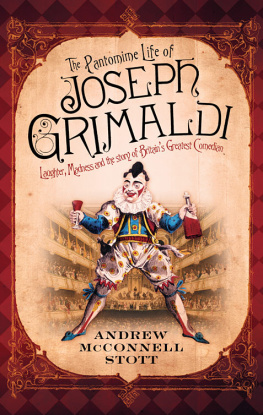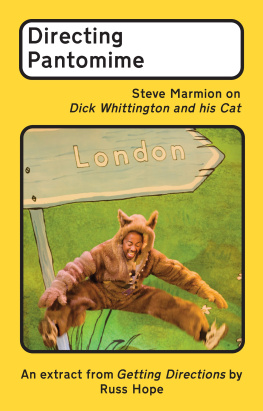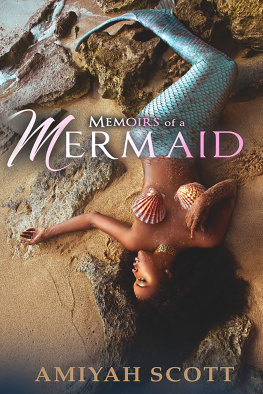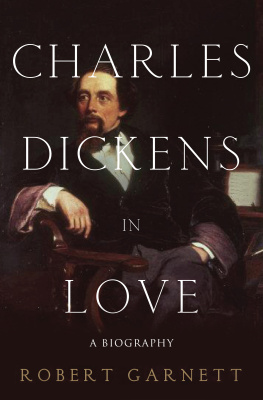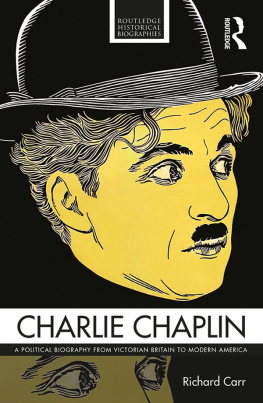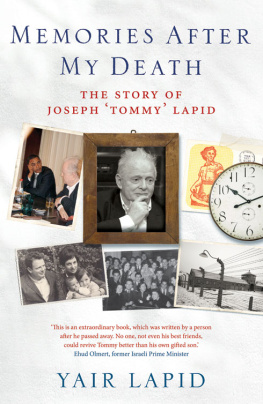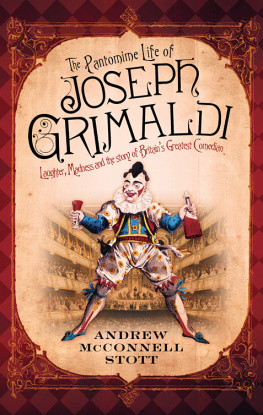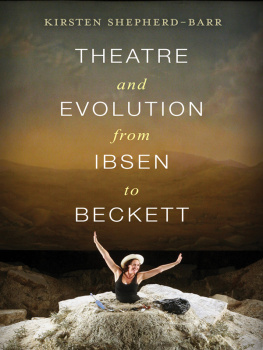

. Joseph Grimaldi by J.E.T. Robinson, 1819 (Garrick Club/Art Archive)
. Foire de Saint-Germain (Bibliothque Nationale de France)
. Grim-All-Day at Breakfast by J. Berry, 1788 ( The Trustees of the British Museum. All rights reserved.)
. Jean-Baptiste Dubois by Van Assen, 1794 (The British Library)
. Dora Jordan by John Hoppner, 1791 ( National Portrait Gallery, London)
. John Philip Kemble after Sir Thomas Lawrence, 1834 ( National Portrait Gallery, London)
. Drury Lane Theatre from the Stage, 1804 (Royal College of Music, London)
. The Manager and His Dog by James Sayers, 1803 ( National Portrait Gallery, London)
. South West View of Sadlers Wells, 1792 (Harry Elkins Widener Collection, Harvard University, HEW 2.7.4)
. Thomas John Dibdin by W. Owen, 1809 (University of Illinois Theatrical Print Collection, University of Illinois at Urbana-Champaign)
. Charles Isaac Mungo Dibdin, junior, by R.W. Satchwell, 1819 (University of Illinois Theatrical Print Collection, University of Illinois at Urbana-Champaign)
. Charles Farley as Cloten in Cymbeline by Thomas Charles Wageman, 1821 (University of Illinois Theatrical Print Collection, University of Illinois at Urbana-Champaign)
. Mr Grimaldi as Orson (Robert Gould Shaw Collection, TS 937.8 F v.1, The Harvard Theatre Collection, Houghton Library)
. The Favourite Comic Dance of Messers Bologna Jun. and Grimaldi by Rudolph Ackermann, 1807 (V&A Images/Victoria and Albert Museum)
. Grimaldi as Clown in Mother Goose, c.1807 (Garrick Club/Art Archive)
. Joseph Grimaldi by John Cawse, 1807 ( National Portrait Gallery, London)
. A View of the Confusion at Sadlers Wells, 1807 (The British Library)
. Covent Garden Theatre by Pugin and Rowlandson, 1809 (Lebrecht Music and Arts)
. Killing No Murder, as Performed at the Grand National Theatre by George and Isaac Cruikshank, 1809 ( The Trustees of the British Museum. All rights reserved.)
. Drury Lane Fire by Abraham Pether, 1809 (Guildhall Art Gallery, City of London)
. Mr. Grimaldi and Mr. Norman in the Epping Hunt, 1813 (Lewis Walpole Library, Yale University)
. Grim Joey Dashing Little Boney into the Jaws of a Russian Bear, 1813 (Harry Elkins Widener Collection, Harvard University, HEW 2.7.4)
. Mr. Grimaldi as Clown by Rudolph Ackermann, 1811 (Lewis Walpole Library, Yale University)
. Mr. Grimaldi as He Appeared When He Took His Farewell Benefit at Drury Lane Theatre on the 27th June, 1828, by H. Brown, 1828 (Harry Elkins Widener Collection, Harvard University, HEW 2.7.4)
. Grimaldi, Barnes and Ellar by H. Brown, 1823 ( The Trustees of the British Museum. All rights reserved.)
. Mr. H. Kemble as Aslan the Lion, 18314 (Billy Rose Theatre Division, The New York Public Library for the Performing Arts, Astor, Lenox and Tilden Foundations)
. Mr. J.S. Grimaldi as Captain Corble in Paul Jones, by H. Brown, c.183032 (Harry Elkins Widener Collection, Harvard University, HEW 2.7.4)
. Mr. J.S. Grimaldi as Scaramouch by A. Chabot (V&A Images/Victoria and Albert Museum)
. Mr. Grimaldi as Clown by Dyer (V&A Images/Victoria and Albert Museum)


T HERES NOTHING PARTICULARLY FUNNY about Hackney, especially when youre sweaty and cold. Dragging a heavy suitcase down the Kingsland Road on a damp day in early February had left me feeling both. A delayed flight meant that Id arrived in London twenty-four hours late, and now, struggling past the pound stores, Turkish sports clubs and electronic bazaars offering to unlock my mobile phone, I was seriously worried that I was going to be late for church. I didnt want to miss the clowns.
I was heading for Holy Trinity, a small but handsome tabernacle settled inconspicuously on a back-street in Dalston. Its here that a memorial service has been held every year since 1959 for Joseph Grimaldi, Regency superstar and father of modern clowning, a service that enjoys some notoriety, thanks to its congregation of working clowns who attend in full slap and motley. As I bumped through the door and finally dumped my bag, I was relieved to find that they hadnt started. Instead, they stood around drinking tea and being disarmingly normal, a friendly and excited group of childrens entertainers and retired circus acts clearly at home with the level of glamour implied by the scuffed-up Scout hall they used as a dressing room. Augustes and Pierrots swapped news with American hobos, while a Coco with a pin head and a tiny bowler hat seemingly reassured his colleague about his prosthetic forehead and mechanical eyebrows. Were it not for the extravagant dress, they could have been any other group of people with a shared enthusiasm. Indeed, I suspected many of membership of the Caravan Club.
The service itself was more disconcerting. I had been a stand-up comic myself and, having twice sought help for depression, was inclined towards the lugubrious in comedy, yet even this left me unprepared for the level of shabby melancholy in which I was about to be immersed. Maybe it was because I was a jet-lagged atheist who was deeply ambivalent about clowns, but I found the experience about as pleasant as a night in a derelict fun park. Presided over by the Vicar of All Saints, and the Clowns Chaplain, the service began with a clown procession that was followed by prayers, hymns, a sermon, a skit with balloon animals, and Clown Rainbow reading nervously from the Gospel of St Luke: Blessed is he, whosoever shall not be offended in me. There was something intractably laconic about it, especially the sincerity with which they offered worship, like a displaced people pleading to come home.
In a sense, that was what they were, because for decades clowns have occupied an ever-diminishing niche in popular culture, their flapping shoes, hoop-waisted trousers, and streams of multi-coloured handkerchiefs more evocative of forced laughter and jaded memories than genuine fun. Commensurate with their decline is a rise in coulrophobia the fear of clowns fuelled by horror flicks and comic-book villains whose particular psychosis troubles the line between laughter and terror. Feeling like an ungrateful guest, I realised it was a prejudice I shared, especially as I caught myself calculating how many diseased minds were lurking behind those blood-red smirks.
Apparently, I was not the only one. The attraction of the abominable draws a big crowd and every year the service is packed with curious onlookers and camera crews who greatly outnumber the dedicated few. By the time I arrived, a busful of Swedish teenagers had already filled the unreserved seats, leaving the aisles to groups of hip young Londoners in futuristic shoes. They were there to enjoy the eccentricity, soaking it up as they would their regular weekend dose of performance art. It might have been scripted, then, when the man who plays Grimaldi at these events received a nasty poke in the eye just minutes before he was due to go on. Bravely, he went through with his act a rendition of Hot Codlins, Grimaldis most popular song, rendered gruesomely fascinating by the contrast of his angry crimson eyeball against the alabaster greasepaint and ran to a waiting ambulance the moment he had finished. I was later told that he sat dejectedly in his costume at Accident and Emergency for several hours.

